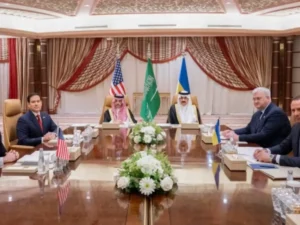WPL Auction 2026 : The Ultimate Guide to Women’s Premier League’s Big Day
India-Pakistan conflict : Operation Sindoor and the Shattered Ceasefire

India-Pakistan conflict : Operation Sindoor
The India-Pakistan conflict has once again thrust South Asia into a state of high alert, with a fragile ceasefire barely holding the line. The spark? A devastating terror attack on April 22, 2025, in Pahalgam, Kashmir, claiming 26 lives. What followed was a rapid escalation that has left the world watching anxiously.
Operation Sindoor : India Strikes Back
On May 7, India launched Operation Sindoor, a bold military operation targeting terror infrastructure in Pakistan and Pakistan-occupied Kashmir (PoK). The strikes hit nine terror camps, including Jaish-e-Mohammad’s stronghold in Bahawalpur, eliminating 35-40 personnel. India’s message was clear: terrorism would face severe consequences. The operation was a direct response to the Pahalgam attack, which New Delhi attributed to Pakistan-backed groups.

India-Pakistan conflict : Pakistan’s Retaliation
Pakistan didn’t stay silent. On May 8-9, it launched missile and drone attacks on Indian military bases in Jammu, Udhampur, and Pathankot. Hundreds of Turkish drones, mostly unarmed, tested India’s defenses, with some capturing reconnaissance footage. India’s advanced systems—S-400, Akash, and Barak-8—neutralized the threat, but the provocation was unmistakable. The cost was heavy: two Indian soldiers, including Surendra Singh Moga and BSF Sub-Inspector Md Imteyaz, lost their lives, while Pakistan reported 26 civilian deaths from India’s strikes.
A Fragile Ceasefire
On May 10, a U.S.-mediated ceasefire brought a temporary pause. But peace was short-lived. By May 11, explosions rocked Srinagar and Jammu, and India accused Pakistan of deploying drones in Barmer, Rajasthan. Pakistan, in turn, claimed India violated the truce. Both nations remain on edge, with India demanding terrorists like Masood Azhar and Hafiz Saeed be handed over, while Pakistan’s troop movements to forward areas hint at further escalation.

Beyond the Battlefield
The conflict’s ripples extend far beyond military clashes. India suspended the Indus Waters Treaty, briefly halting water flow from the Baglihar dam, a move with severe implications for Pakistan. Both nations expelled diplomats, canceled visas, and suspended trade. Pakistan closed its airspace, and India abstained from supporting a $1 billion IMF bailout for Pakistan, citing its terrorism links. The human toll is stark: blackouts hit Indian-administered Kashmir, the Indian Premier League paused for a week, and Pakistan’s Twenty20 league was postponed indefinitely.
The Road Ahead
The India-Pakistan conflict is a stark reminder of deep-rooted tensions, fueled by decades of mistrust and unresolved issues like Kashmir. The ceasefire, brokered with U.S. and Saudi involvement, hangs by a thread. Social media buzzes with reports of diplomatic fallout and troop movements, though misinformation—like false claims of Imran Khan’s death—clouds the narrative.

Also Read This : Meet Flight Lieutenant Shivangi Singh : India’s Trailblazing Rafale Pilot
As both nations stand at a crossroads, the world hopes for de-escalation. But with mutual accusations and no clear path to dialogue, the risk of renewed conflict looms large. What’s next for India and Pakistan? Only time will tell.


